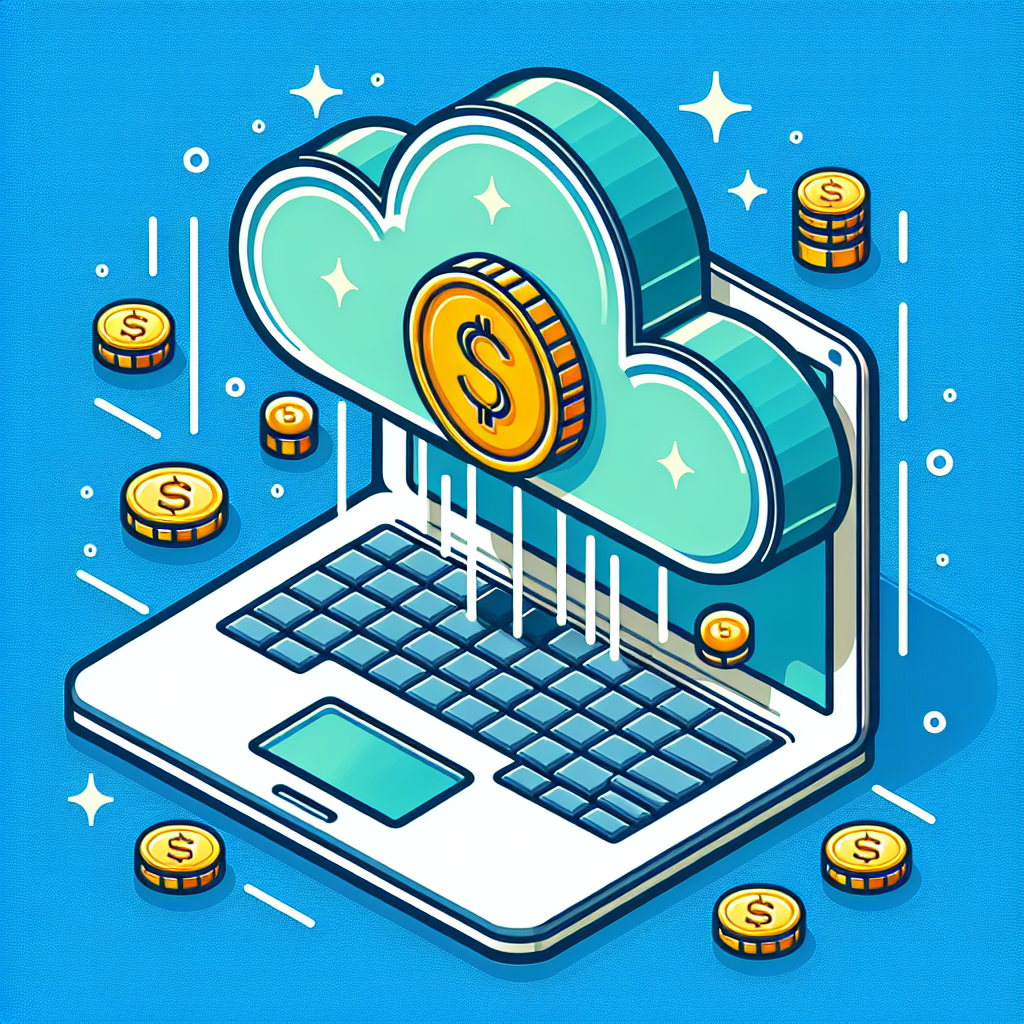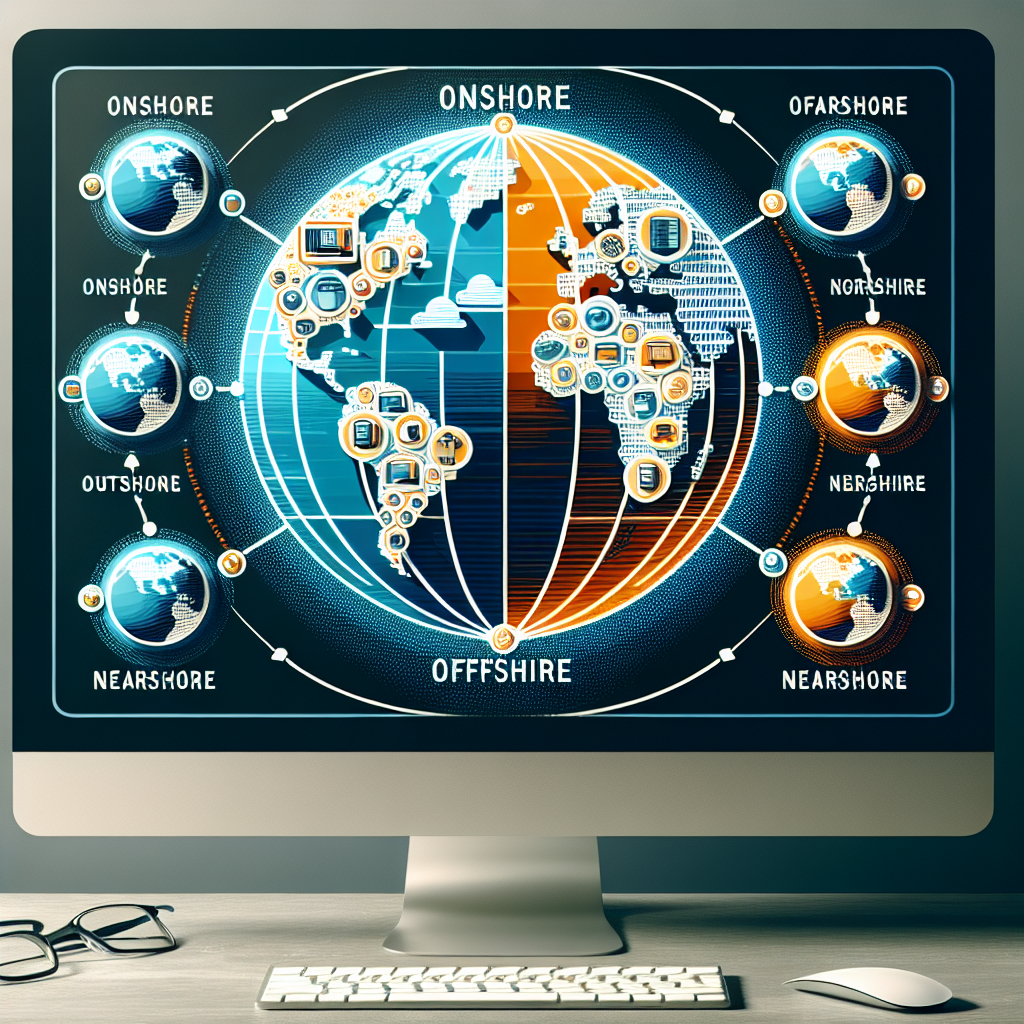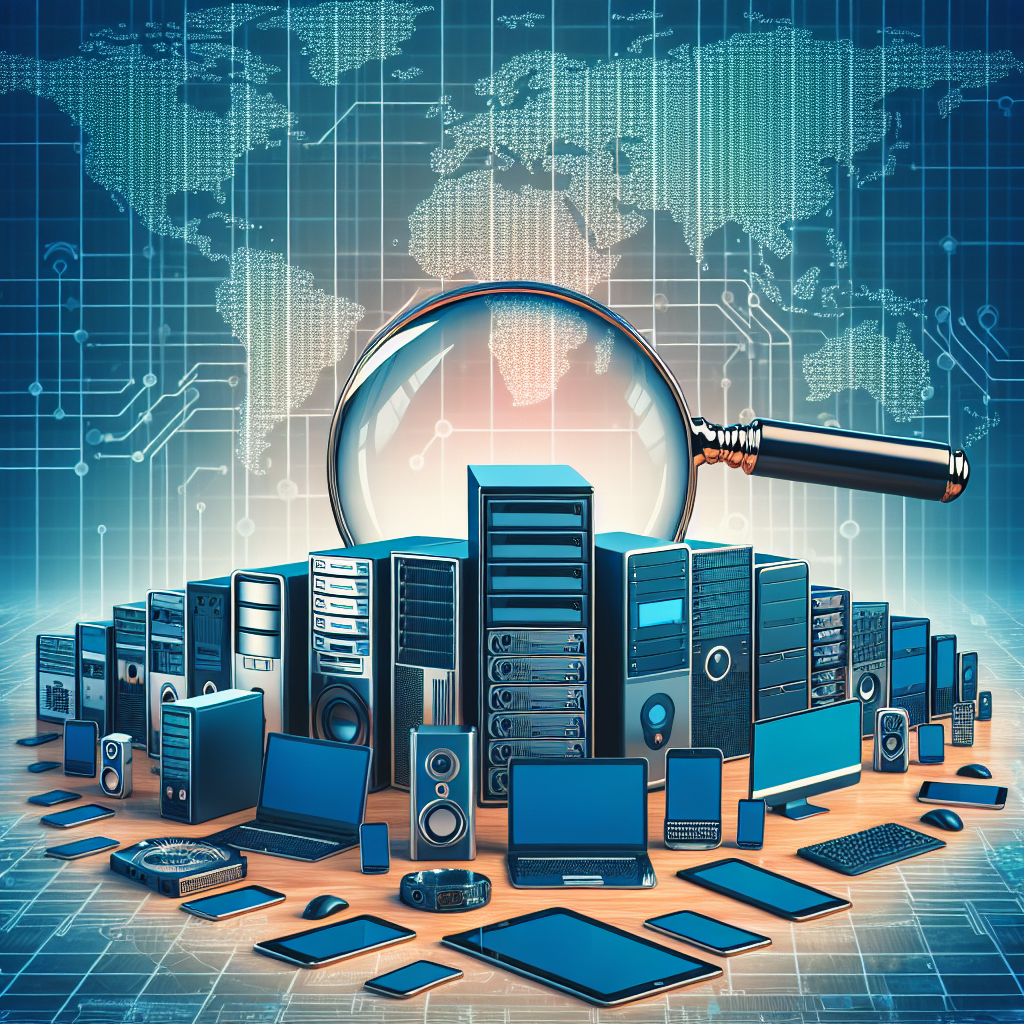Your cart is currently empty!
Tag: Exploring

Exploring the Global Landscape of IT Outsourcing: Opportunities and Challenges
In today’s fast-paced and technology-driven world, IT outsourcing has become a popular choice for businesses looking to stay ahead of the competition. The global landscape of IT outsourcing is vast and diverse, presenting both opportunities and challenges for organizations seeking to leverage external expertise and resources.One of the key opportunities of IT outsourcing is the ability to access a wide pool of talent and expertise from around the world. By outsourcing IT services to countries with a strong technology infrastructure and skilled workforce, businesses can benefit from cost-effective solutions and innovative ideas that can help drive growth and success.
Additionally, IT outsourcing can also help businesses to focus on their core competencies and strategic initiatives, while leaving the technical aspects to experts in the field. This can lead to increased efficiency, productivity, and overall performance, as well as the ability to scale operations quickly and effectively in response to changing market demands.
However, while there are numerous benefits to IT outsourcing, there are also challenges that organizations must be aware of and address in order to maximize the potential of this approach. One of the main challenges is the risk of data security and privacy breaches, as outsourcing IT services to external providers can expose sensitive information to potential threats and vulnerabilities.
Furthermore, communication and cultural differences can also pose challenges when working with offshore outsourcing partners. It is essential for businesses to establish clear communication channels and protocols, as well as to understand and respect the cultural norms and practices of the countries they are outsourcing to in order to ensure successful collaboration and project delivery.
In conclusion, exploring the global landscape of IT outsourcing can present numerous opportunities for businesses looking to enhance their competitive edge and drive innovation. By leveraging external expertise and resources, organizations can benefit from cost-effective solutions, access to top talent, and increased operational efficiency.
However, it is important for businesses to be aware of the challenges and risks associated with IT outsourcing, such as data security concerns and communication barriers. By taking proactive steps to address these challenges and establish strong partnerships with outsourcing providers, businesses can maximize the benefits of IT outsourcing and achieve long-term success in today’s dynamic and competitive business environment.

Exploring the Cost Savings of Managed Services for Small Businesses
Small businesses often struggle with limited resources and tight budgets, making it challenging for them to invest in expensive IT infrastructure and support. However, managed services offer a cost-effective solution for small businesses looking to streamline their operations and improve their bottom line.Managed services providers (MSPs) offer a range of services, including network monitoring, data backup and recovery, cybersecurity, and help desk support. By outsourcing these IT functions to an MSP, small businesses can access top-notch expertise and technology without the hefty price tag of hiring an in-house IT team.
One of the key cost savings of managed services is the ability to pay for only the services that are needed, rather than investing in expensive hardware and software that may go underutilized. MSPs offer flexible pricing models, such as pay-as-you-go or monthly subscription plans, allowing small businesses to scale their IT support as needed without committing to a long-term contract.
Additionally, by outsourcing IT functions to an MSP, small businesses can avoid the costs associated with recruiting, training, and retaining IT staff. MSPs employ a team of experienced professionals who are well-versed in the latest technologies and best practices, ensuring that small businesses receive high-quality support without the overhead costs of hiring and managing an in-house team.
Furthermore, managed services can help small businesses avoid costly downtime due to IT issues. MSPs proactively monitor networks and systems, identifying and addressing potential problems before they escalate into major issues. This proactive approach can prevent costly downtime and lost productivity, allowing small businesses to focus on their core operations without the worry of IT disruptions.
In conclusion, managed services offer a cost-effective solution for small businesses looking to improve their IT infrastructure and support. By outsourcing IT functions to an MSP, small businesses can access top-notch expertise and technology without the hefty price tag of hiring an in-house IT team. The cost savings of managed services, along with the improved efficiency and productivity they provide, make them a valuable investment for small businesses looking to succeed in today’s competitive marketplace.

Exploring the Cost Savings of Cloud Computing
Cloud computing has revolutionized the way businesses operate by providing cost-effective and efficient solutions for storing and accessing data. With the rise of cloud computing services, many companies are exploring the potential cost savings that can be achieved by migrating their operations to the cloud.One of the main advantages of cloud computing is its pay-as-you-go pricing model, which allows businesses to only pay for the resources they use. This eliminates the need for companies to invest in expensive hardware and software infrastructure, as cloud service providers handle the maintenance and management of the infrastructure. This can result in significant cost savings for businesses, as they no longer have to worry about upfront capital expenditures for IT equipment.
Additionally, cloud computing allows businesses to scale their operations easily and quickly, without the need to purchase additional hardware or software. This flexibility enables companies to respond to changing market conditions and customer demands more effectively, while also saving money on unnecessary resources.
Another cost-saving benefit of cloud computing is the reduced need for in-house IT staff. With cloud service providers handling the maintenance and security of the infrastructure, businesses can reduce their IT staffing costs and reallocate resources to other areas of the company.
Furthermore, cloud computing can help businesses save money on energy costs, as cloud service providers typically operate large data centers that are more energy-efficient than on-premises servers. By outsourcing their computing needs to the cloud, companies can reduce their carbon footprint and lower their energy bills.
In conclusion, exploring the cost savings of cloud computing can provide businesses with a competitive edge in today’s fast-paced market. By leveraging the pay-as-you-go pricing model, scalability, reduced need for in-house IT staff, and energy efficiency of cloud computing services, companies can achieve significant cost savings while also improving their operational efficiency and agility. As more businesses continue to adopt cloud computing solutions, the potential for cost savings will only continue to grow.

Exploring the Role of Automation in Network Management
With the increasing complexity and scale of modern networks, the role of automation in network management has become more crucial than ever before. Automation is revolutionizing the way networks are managed, allowing organizations to streamline operations, improve efficiency, and reduce the risk of human error.One of the key benefits of automation in network management is its ability to speed up routine tasks. Manual network management processes can be time-consuming and prone to errors, leading to downtime and potential security risks. Automation tools can help network administrators automate repetitive tasks such as device configuration, software updates, and network monitoring, allowing them to focus on more strategic tasks that require human intervention.
In addition to improving efficiency, automation can also enhance network security. By automating security protocols and configurations, organizations can ensure that their networks are consistently protected against cyber threats. Automation tools can help organizations identify vulnerabilities, enforce compliance policies, and respond to security incidents in real-time, reducing the risk of data breaches and other security incidents.
Furthermore, automation can help organizations scale their networks more effectively. As networks grow in size and complexity, manual network management processes can become unsustainable. Automation tools can help organizations scale their networks seamlessly by automating the provisioning of new devices, adjusting network configurations, and optimizing network performance.
Another benefit of automation in network management is its ability to improve visibility and control over network infrastructure. Automation tools can provide network administrators with real-time insights into network performance, traffic patterns, and potential issues, allowing them to proactively address issues before they impact end-users.
Overall, automation plays a critical role in modern network management by streamlining operations, improving efficiency, enhancing security, and enabling organizations to scale their networks effectively. As organizations continue to adopt automation tools, they will be better positioned to meet the growing demands of their networks and ensure that they remain secure, reliable, and resilient in the face of evolving threats and challenges.

Exploring the Latest Trends in Remote Monitoring Technology
Remote monitoring technology has seen significant advancements in recent years, revolutionizing the way businesses and individuals track and manage their assets and activities from a distance. From monitoring equipment and infrastructure to keeping tabs on the health and well-being of individuals, remote monitoring technology has become an essential tool in various industries.One of the latest trends in remote monitoring technology is the integration of Internet of Things (IoT) devices. These devices are equipped with sensors that can collect and transmit data over the internet, allowing for real-time monitoring and analysis. This technology enables businesses to track the performance of their equipment and detect potential issues before they escalate into costly problems.
Another trend in remote monitoring technology is the use of artificial intelligence (AI) and machine learning algorithms to analyze and interpret the data collected by remote monitoring devices. These advanced technologies can identify patterns and trends in the data, providing valuable insights that can help businesses make informed decisions and optimize their operations.
Furthermore, remote monitoring technology is now increasingly being used in the healthcare industry to monitor patients’ health and well-being remotely. From wearable devices that track vital signs to remote monitoring systems that can alert healthcare providers of potential health issues, this technology is revolutionizing the way healthcare is delivered.
In addition, remote monitoring technology is also being used in the energy sector to monitor and manage energy consumption and optimize energy efficiency. By remotely monitoring energy usage and identifying areas for improvement, businesses can reduce their carbon footprint and save on energy costs.
Overall, remote monitoring technology is continuously evolving and expanding its capabilities, making it an essential tool for businesses and individuals looking to streamline their operations, improve efficiency, and enhance safety and security. As technology continues to advance, we can expect to see even more innovative applications of remote monitoring technology in the future.

Exploring the Different Models of IT Outsourcing: Onshore, Offshore, and Nearshore
In today’s fast-paced business environment, IT outsourcing has become a popular strategy for companies looking to reduce costs, improve efficiency, and access specialized skills. There are various models of IT outsourcing available, each offering different benefits and challenges. In this article, we will explore the three main models of IT outsourcing: onshore, offshore, and nearshore.Onshore outsourcing refers to the practice of hiring an external company or team located in the same country as the client. This model is often preferred by companies that value proximity, cultural alignment, and easy communication. Onshore outsourcing offers the advantage of working in the same time zone, which can lead to faster response times and easier collaboration. Additionally, onshore outsourcing can help mitigate language barriers and cultural differences, leading to smoother project execution.
However, onshore outsourcing can be more expensive compared to offshore and nearshore models due to higher labor costs. Additionally, depending on the location, the talent pool may be limited, leading to challenges in finding specialized skills.
Offshore outsourcing involves hiring an external company or team located in a different country, often in a low-cost region such as India, the Philippines, or Eastern Europe. Offshore outsourcing is known for its cost-effectiveness, as labor costs in these regions are typically lower than in Western countries. This model also offers access to a large pool of skilled IT professionals, allowing companies to tap into specialized expertise that may not be available locally.
However, offshore outsourcing comes with its own set of challenges, including language barriers, cultural differences, and time zone differences. Communication issues can arise due to differences in language and working styles, leading to misunderstandings and delays in project delivery. Additionally, managing a team located in a different country can be challenging, as it requires effective communication and coordination across borders.
Nearshore outsourcing is a hybrid model that combines the benefits of onshore and offshore outsourcing. Nearshore outsourcing involves hiring an external company or team located in a neighboring country, often in a region with similar time zones and cultural norms. This model offers the advantages of cost-effectiveness, access to a diverse talent pool, and proximity for easier communication and collaboration.
Nearshore outsourcing is becoming increasingly popular among companies looking to balance cost savings with quality and efficiency. By choosing a nearshore partner, companies can benefit from lower labor costs while still maintaining close proximity for effective communication and project management. Additionally, nearshore outsourcing can help companies expand their global footprint and access new markets without the challenges of managing a team in a completely different time zone.
In conclusion, the choice of IT outsourcing model will depend on various factors, including cost considerations, project requirements, and desired outcomes. Each model has its own set of benefits and challenges, and companies should carefully evaluate their needs and priorities before selecting the most suitable outsourcing model for their business. Whether it’s onshore, offshore, or nearshore outsourcing, companies can leverage external expertise to drive innovation, improve efficiency, and achieve their business goals.

Exploring the Different Types of Managed Service Providers
Managed service providers (MSPs) are companies that offer outsourced IT services, including infrastructure management, network monitoring, security, and more. These services are typically provided on a subscription basis, allowing businesses to access the expertise and resources they need without the overhead of hiring and managing an in-house IT team.There are several different types of MSPs, each specializing in a specific area of IT services. By understanding the different types of MSPs available, businesses can choose the provider that best meets their needs.
1. Infrastructure as a Service (IaaS) MSPs: These providers offer cloud-based infrastructure services, such as virtual servers, storage, and networking. Businesses can leverage IaaS MSPs to scale their IT infrastructure as needed without the cost and complexity of managing physical hardware.
2. Managed Security Service Providers (MSSPs): MSSPs focus on providing cybersecurity services, such as threat detection, incident response, and compliance management. With the increasing number of cyber threats facing businesses today, working with an MSSP can help organizations protect their sensitive data and mitigate security risks.
3. Managed Network Service Providers (MNSPs): MNSPs specialize in managing and monitoring a company’s network infrastructure, including routers, switches, and firewalls. By partnering with an MNSP, businesses can ensure their networks are secure, reliable, and optimized for performance.
4. Managed Backup and Disaster Recovery Service Providers: These MSPs offer backup and disaster recovery solutions to help businesses protect their data and ensure business continuity in the event of a disaster. By outsourcing these critical services to a managed provider, organizations can minimize downtime and data loss.
5. Managed Print Service Providers: Managed print service providers offer services to help businesses manage their printing infrastructure, including printers, copiers, and supplies. By outsourcing print management to an MSP, businesses can reduce costs, improve efficiency, and streamline their printing workflows.
6. Managed Application Service Providers: These providers offer services to help businesses manage and support their applications, such as software updates, performance monitoring, and troubleshooting. By working with a managed application service provider, businesses can ensure their critical applications are running smoothly and efficiently.
Overall, there are a variety of MSPs available to help businesses manage their IT infrastructure, security, networking, and more. By exploring the different types of managed service providers and choosing the one that best aligns with their needs, businesses can benefit from expert IT support, improved efficiency, and cost savings.

Exploring the Impact of Remote Monitoring on Remote Workforces
As remote work becomes increasingly prevalent in today’s workforce, the need for effective monitoring of remote employees has also grown. Remote monitoring, which involves tracking and overseeing employee activities and performance while they work remotely, has become a crucial tool for businesses to ensure productivity and accountability.One of the key impacts of remote monitoring on remote workforces is increased productivity. With remote monitoring tools, employers can track the amount of time employees spend on various tasks, monitor their internet usage, and even track their keystrokes. This level of oversight can help employees stay focused and on task, leading to improved productivity levels.
Remote monitoring also helps to ensure accountability among remote employees. By tracking their activities and performance, employers can identify any issues or areas of concern and address them promptly. This can help to prevent slacking off or unproductive behavior among remote workers, ultimately leading to a more efficient and effective workforce.
Additionally, remote monitoring can help to improve communication and collaboration within remote teams. By tracking employee activities and progress on tasks, managers can easily identify bottlenecks or gaps in communication and take steps to address them. This can help to streamline workflows and ensure that remote teams are working together effectively towards common goals.
However, while remote monitoring can provide many benefits for employers, it is important to strike a balance between oversight and trust. Constant monitoring and micromanagement can lead to decreased morale and job satisfaction among remote employees. It is important for employers to communicate openly with their remote teams about the reasons for monitoring and to ensure that it is done in a respectful and transparent manner.
In conclusion, remote monitoring can have a significant impact on remote workforces, leading to increased productivity, accountability, and collaboration. By implementing effective remote monitoring tools and strategies, businesses can ensure that their remote teams are working efficiently and effectively towards achieving their goals.

The Future of IT: Exploring the Growing Trend of Managed Services
The Future of IT: Exploring the Growing Trend of Managed ServicesIn today’s fast-paced digital world, businesses are constantly looking for ways to improve efficiency, reduce costs, and stay ahead of the competition. One of the key trends that has emerged in the world of IT is the growing popularity of managed services.
Managed services refer to the practice of outsourcing the management of IT functions to a third-party provider. This can include tasks such as network monitoring, security management, data backup and recovery, and software updates. By offloading these responsibilities to a managed services provider, businesses can focus on their core operations and strategic initiatives, while also benefitting from the expertise and resources of a specialized IT team.
One of the main drivers behind the increasing adoption of managed services is the growing complexity of IT systems. With the rise of cloud computing, big data, and the Internet of Things, businesses are faced with a myriad of new technologies and security threats that can be difficult to manage in-house. Managed services providers have the knowledge and experience to navigate these challenges, ensuring that businesses can stay secure and compliant in an ever-changing landscape.
Another factor contributing to the popularity of managed services is the shift towards a more flexible and scalable IT model. With traditional IT infrastructure, businesses are often constrained by fixed costs and limited resources. Managed services offer a pay-as-you-go model, allowing businesses to scale their IT services up or down based on their needs, without the need for costly investments in hardware and personnel.
Furthermore, managed services can provide businesses with access to cutting-edge technologies and best practices that may be out of reach for small to medium-sized businesses. By partnering with a managed services provider, businesses can benefit from the latest advancements in IT without having to make significant investments in training and infrastructure.
As we look towards the future of IT, it is clear that managed services will continue to play a pivotal role in helping businesses stay competitive and agile in a rapidly evolving digital landscape. By outsourcing the management of their IT functions to a trusted provider, businesses can streamline their operations, improve security and compliance, and drive innovation and growth.
In conclusion, the future of IT is bright with the growing trend of managed services. Businesses that embrace this model will be better positioned to navigate the complexities of the digital world and achieve their strategic goals in a more efficient and cost-effective manner.

Exploring the Evolution of Remote Monitoring in Various Industries
Remote monitoring has become an essential tool for industries across the board, allowing businesses to keep an eye on their operations from anywhere in the world. The evolution of remote monitoring technology has revolutionized the way companies do business, offering numerous benefits including increased efficiency, improved safety, and reduced costs.In the past, remote monitoring was limited to simple sensors and cameras that provided basic information about a company’s operations. However, with advances in technology, remote monitoring has evolved to include a wide range of capabilities that allow businesses to monitor everything from equipment performance to environmental conditions in real-time.
One industry that has benefited greatly from the evolution of remote monitoring is the manufacturing sector. Manufacturers can now use remote monitoring technology to track the performance of their equipment, monitor production levels, and identify potential issues before they become major problems. This has led to increased efficiency, reduced downtime, and improved productivity for manufacturers around the world.
The healthcare industry has also seen significant benefits from the evolution of remote monitoring technology. With the rise of telemedicine and remote patient monitoring, healthcare providers can now monitor their patients’ vital signs, track medication adherence, and even conduct virtual consultations from anywhere in the world. This has not only improved patient care but has also reduced healthcare costs and increased access to care for those in remote or underserved areas.
In the energy sector, remote monitoring technology has revolutionized the way companies monitor and manage their assets. With the ability to remotely monitor equipment performance, track energy usage, and identify potential issues before they occur, energy companies can now operate more efficiently and sustainably. This has not only reduced costs for energy companies but has also helped to reduce their environmental impact.
In the transportation industry, remote monitoring technology has played a crucial role in improving safety and efficiency. With the ability to track vehicle performance, monitor driver behavior, and detect potential maintenance issues in real-time, transportation companies can now ensure the safety of their drivers and passengers while also reducing costs and improving overall efficiency.
Overall, the evolution of remote monitoring technology has had a profound impact on various industries, allowing businesses to operate more efficiently, improve safety, and reduce costs. As technology continues to advance, we can expect to see even more innovative remote monitoring solutions that will further revolutionize the way companies do business.
